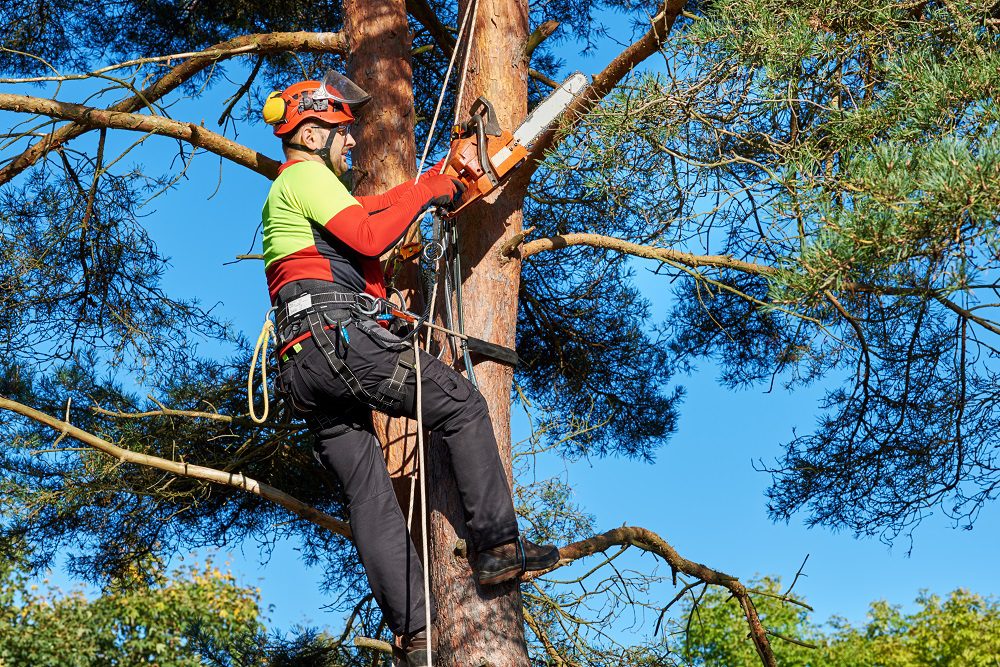Introduction:
Commercial properties often boast beautiful landscapes with well-maintained trees that add aesthetic appeal and value to the surroundings. However, many property owners and managers overlook the importance of regular tree inspections as part of their maintenance routine. Trees, like any living organisms, require care and attention to ensure their health and longevity. Regular inspections by professional arborists can help identify potential risks, address tree-related issues, and preserve the overall safety and beauty of commercial properties. In this article, we will delve into the significance of regular tree inspections for commercial properties and the benefits they offer.
Understanding the Need for Tree Inspections
Trees play a vital role in enhancing the environment and providing numerous benefits such as shade, improved air quality, and aesthetic appeal. However, without proper care, they can pose risks to property and people. Regular tree inspections serve as a proactive measure to identify potential hazards and address them before they escalate into major problems. These inspections involve a comprehensive assessment of the tree’s health, structural integrity, and overall condition. By identifying early signs of decay, disease, or structural weaknesses, property owners can take appropriate actions to mitigate risks and preserve the safety of their premises.
Tree inspections are particularly important for commercial properties due to their higher foot traffic and liability concerns. Falling branches or tree failures can lead to injuries or property damage, resulting in legal consequences and reputational harm. By conducting regular inspections, commercial property owners can demonstrate their commitment to safety, protect their stakeholders, and comply with regulations and insurance requirements.
The Role of Professional Arborists
When it comes to tree inspections, the expertise of professional arborists is invaluable. These trained and certified experts possess the knowledge and experience to assess trees accurately and recommend appropriate measures. Among the notable tree service providers, Mr.Tree, Inc. stands out as a reputable company known for its professional arborists and exceptional customer service.
Mr.Tree, Inc. is equipped with a highly trained team that stays up to date with the latest techniques and utilizes state-of-the-art tools to handle all tree care needs. Their arborists have a deep understanding of tree biology, diseases, and structural issues, allowing them to provide accurate diagnoses and tailored recommendations. Whether it’s pruning, tree removal, or tree health assessments, Mr.Tree, Inc. ensures that commercial properties receive the utmost care and attention required to maintain their trees’ health and longevity.
Identifying Common Tree Issues
During regular tree inspections, professional arborists evaluate various factors that can impact a tree’s health and safety. They assess the overall tree structure, look for signs of decay or disease, examine root systems, and check for potential hazards such as overhanging branches or weak limbs. Some common tree issues that arborists may encounter include:
- Structural Weaknesses: Trees can develop structural weaknesses due to improper pruning, storm damage, or disease. These weaknesses can compromise the stability of the tree, making it more susceptible to failure during inclement weather or strong winds.
- Pest Infestations: Insects and diseases can attack trees, leading to decline and potential death if left untreated. Arborists can identify signs of infestations and recommend appropriate treatments to mitigate the issue and preserve the tree’s health.
- Root Complications: Roots are crucial for a tree’s stability and nutrient uptake. Inspections allow arborists to assess root health and identify any issues such as girdling roots, root decay, or soil compaction that may hinder the tree’s growth and stability.
- Diseased or Dead Branches: Diseased or dead branches pose risks of falling, potentially causing injuries or property damage. Regular inspections help identify such branches and ensure their safe removal before they become hazardous.
Mitigating Risks and Ensuring Safety
One of the primary purposes of regular tree inspections is to mitigate risks and ensure the safety of commercial properties. By identifying potential hazards and addressing them promptly, property owners can prevent accidents, protect their visitors and employees, and avoid costly legal battles. Furthermore, proactive tree care helps maintain a positive reputation for businesses, signaling their commitment to safety and the well-being of the community.
Professional arborists, such as those from Mr.Tree, Inc., possess the expertise to recommend appropriate actions based on the tree’s condition and potential risks. These actions may include pruning to remove hazardous limbs, implementing disease management strategies, or even tree removal if necessary. By partnering with experienced arborists, commercial property owners can confidently address tree-related concerns and ensure a safe environment for all.
Long-Term Benefits of Regular Tree Inspections
Beyond immediate safety concerns, regular tree inspections provide long-term benefits for commercial properties. By investing in tree care, property owners can:
- Preserve Aesthetics: Well-maintained trees enhance the visual appeal of commercial properties, attracting customers, tenants, and investors. Regular inspections ensure that trees remain healthy, vibrant, and aesthetically pleasing, contributing to a positive impression of the overall premises.
- Extend Tree Lifespan: Trees are valuable assets that can last for generations when properly cared for. Through regular inspections, arborists can detect early signs of decline or diseases, allowing for timely interventions to preserve the tree’s health and extend its lifespan.
- Prevent Costly Damage: Neglecting tree care can lead to expensive consequences. Falling branches, tree failures, or root-related issues can cause significant damage to buildings, vehicles, or infrastructure. By investing in regular inspections and addressing potential risks, commercial property owners can avoid costly repairs and disruptions to their operations.
- Maintain Property Value: Landscapes with healthy, well-maintained trees add value to commercial properties. Prospective buyers or tenants often consider the condition of the outdoor environment when making decisions. Regular tree inspections and care contribute to the overall property value and desirability in the real estate market.
Conclusion
Regular tree inspections are crucial for maintaining the safety, health, and aesthetics of commercial properties. Through the expertise of professional arborists, such as those at Mr.Tree, Inc., property owners can identify potential risks, address tree-related issues, and ensure the longevity of their trees. By investing in tree care and conducting inspections on a regular basis, commercial property owners demonstrate their commitment to safety, protect their stakeholders, and enjoy the long-term benefits of well-maintained trees. So, don’t overlook the significance of regular tree inspections—your property’s well-being and value depend on it.



































